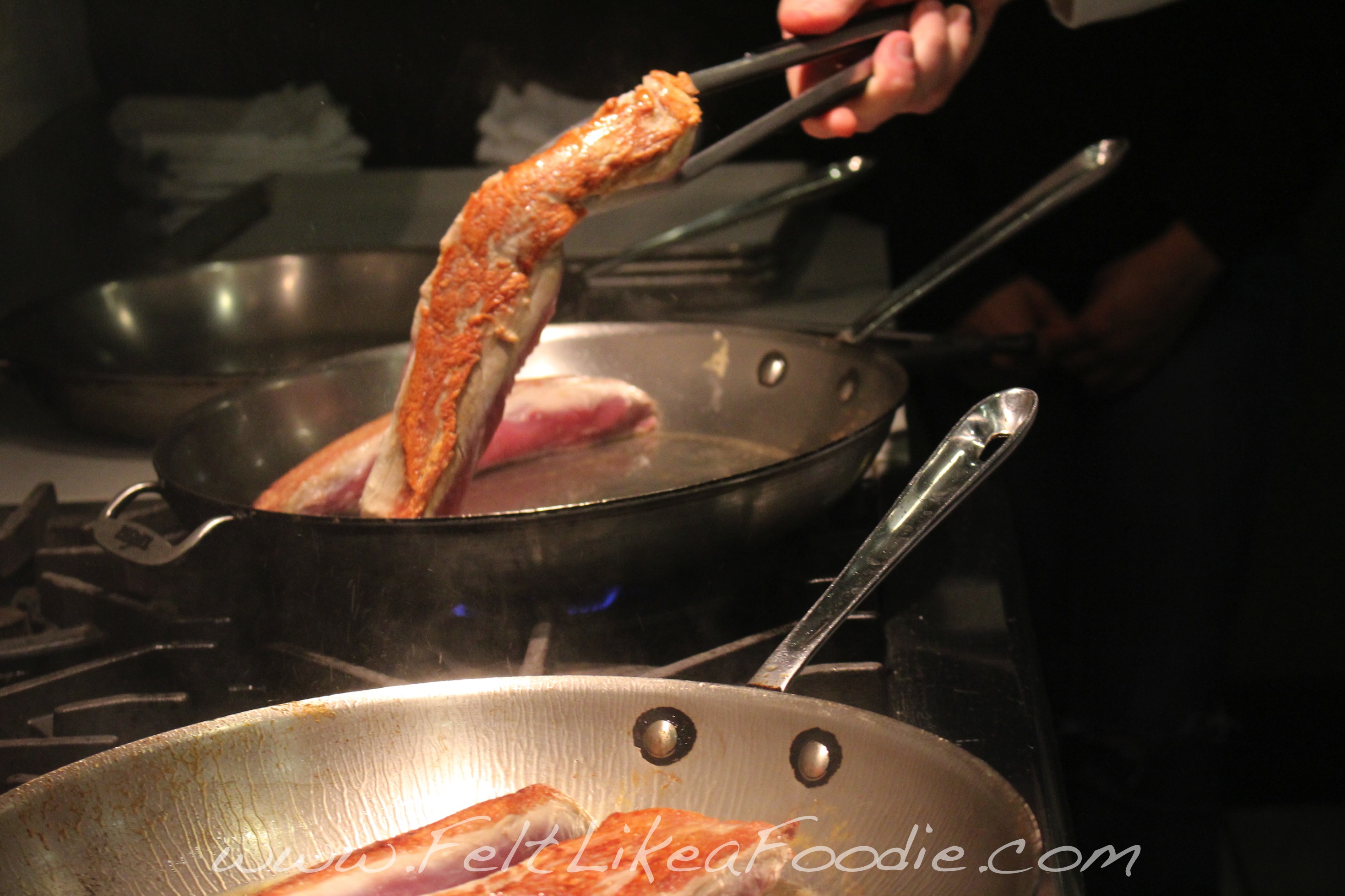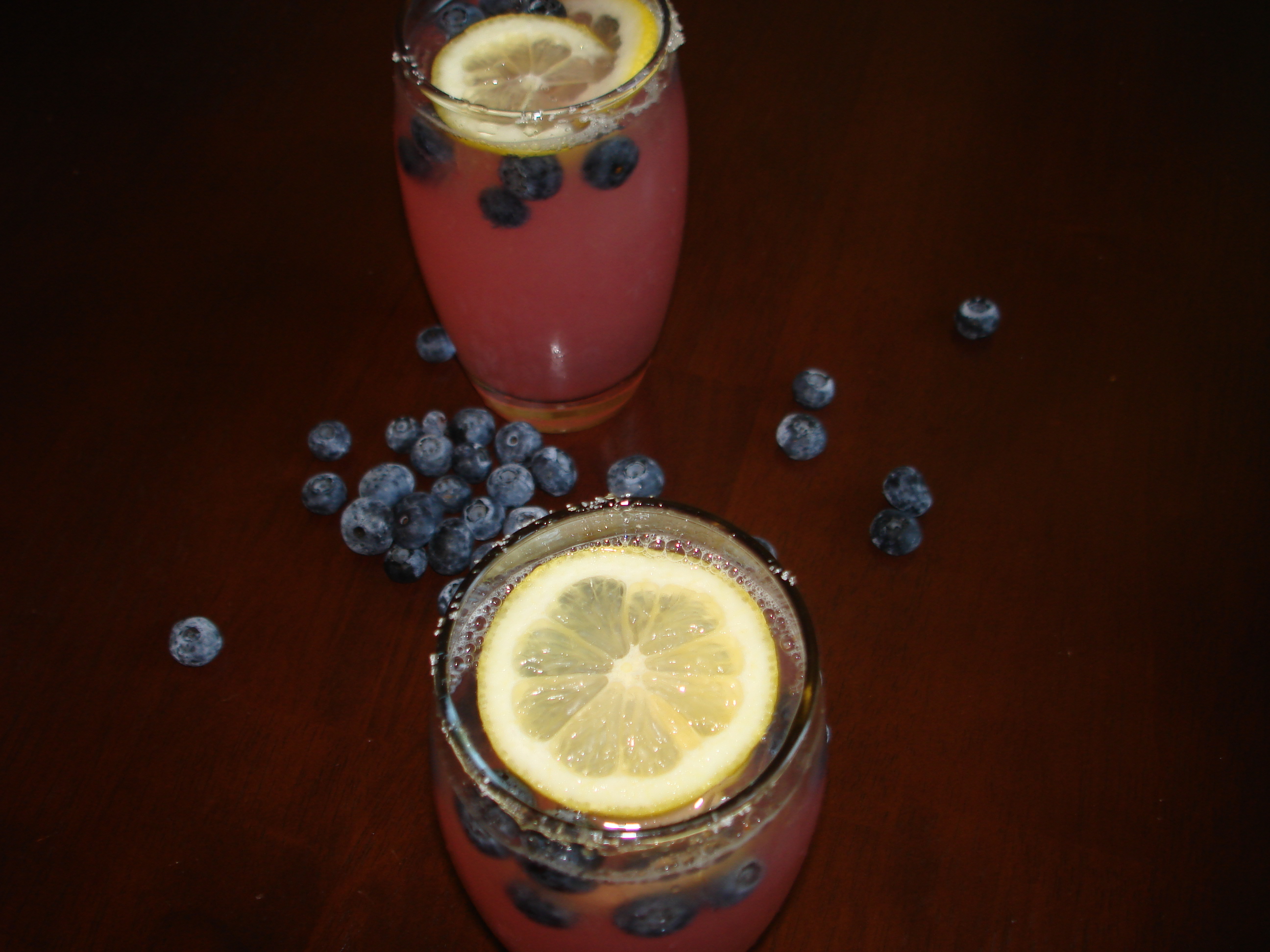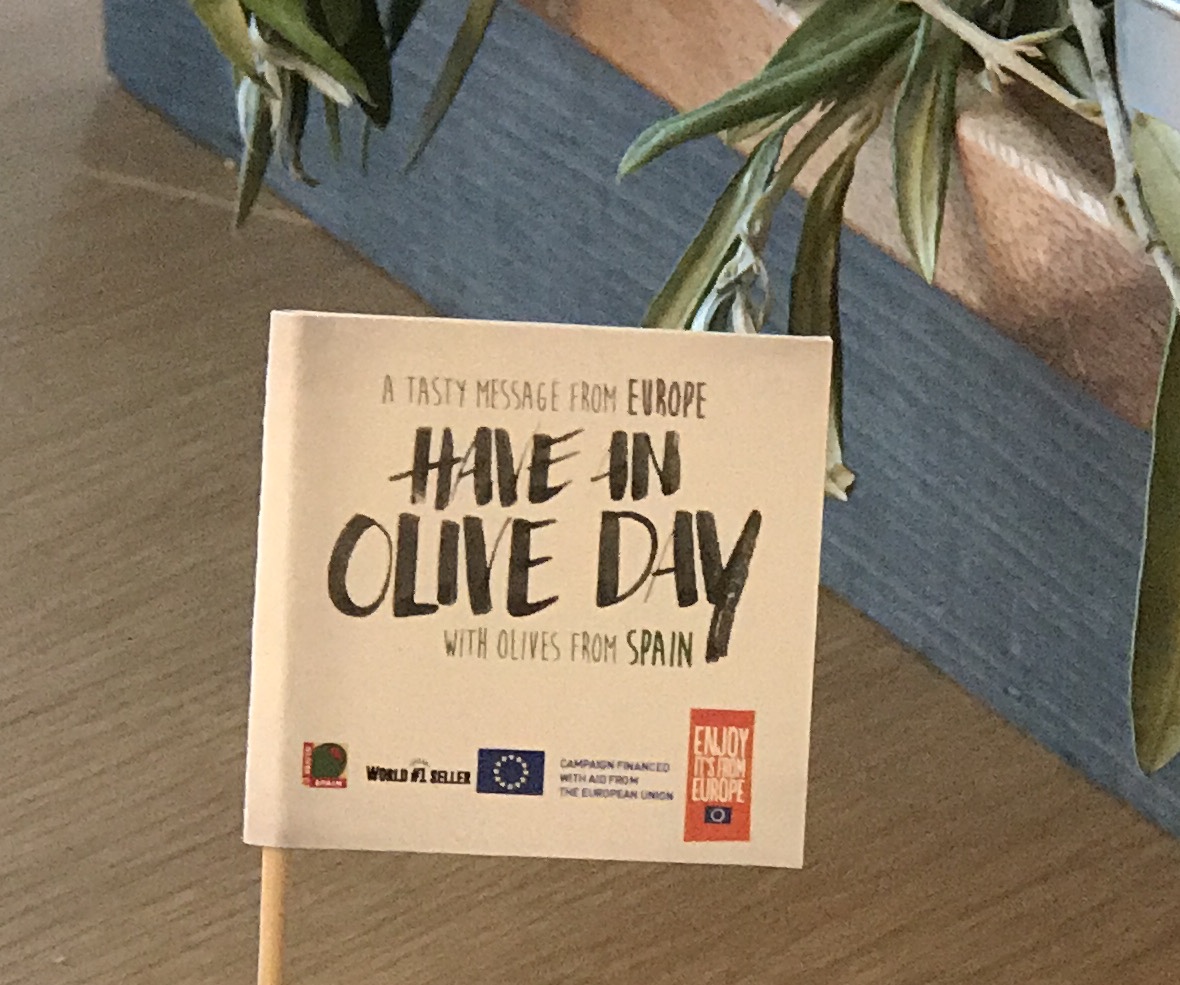
One of the best things about blogging about food is that there are opportunities to learn around every corner. It doesn’t always have to be about food, it can also give you an experience to learn a little bit about yourself by meeting legends in the industry.
On Tuesday, May 8, 2018, I was invited to join Olives from Spain for an intimate reception hosted by…..wait for it….José Andrés!!!!!! “Named one of Time’s “100 Most Influential People,” awarded “Outstanding Chef” and “Humanitarian of the Year” by the James Beard Foundation, José Andrés is an internationally-recognized culinary innovator, author, educator, television personality, humanitarian and chef/owner of ThinkFoodGroup.”
There are really no words that I can find that would describe my admiration for Chef Andrés. I’ve been a fan of his recipes and knowledge of Spanish Food for years but he is more than just a chef. I really didn’t know his character until this past year during the relief effort of Hurricane Maria in Puerto Rico. He was one of the leaders organizing groups of chefs and other volunteers to help provide supplies, meals and hope to thousands and thousands of people. The amazing thing is that he is the kind of person who did so much but would react to admiration with humbleness.
Having an opportunity to hear him speak and shake his hand this week was an honor….to hear him speak about olives was the icing on the cake!
Let’s start from the beginning of where do olives come from…they come from trees and are handpicked for optimal quality and flavor. (Spain has the optimal weather and soil for perfect olive production.)
It is kind of like apple picking….you don’t just grab apples off the ground and expect them to be delicious. You go to the orchard, know your varieties and pick the flawless fruit. It is the same for olives.
“Making the grade depends on a variety of factors, such as the fruit’s fat content, the size of the pit in comparison to the flesh, how easily the pit can be removed, as well as the skin’s overall characteristics. If an olive has a small, smooth pit, average fat content, delicately tasty but firm flesh, as well as fine skin, it is given the green light as a table olive.”
As for colors and flavors, like pepper plants, there are no trees that grow specifically green olives!!! Olives start green and as they ripen they go to a golden brownish color, to a reddish-purple and then to black!
So, a green olive is the start of the harvest olive and are firm. In contrast, the black olive is picked later in the season and is softer. Picked off the tree, they are bitter. It is in the process and preparation where you find the real flavor and the difference between those who fancy the design of olives and those who put them on their fingers at the dinner table. (Okay, I do care but I can’t resist a good olive finger moment if I can find one.)
The only exception to this rule is the “black ripe olive.” It is an olive that is picked before it is technically ripe and put through a process to make them finish maturing. This is probably the type most of us saw on our family dining tables during holidays. It is pretty mild and really versatile.
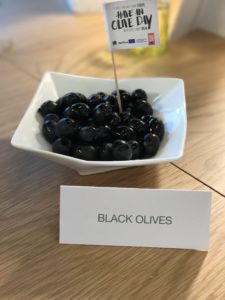
Green olives (manzanillas) stuffed with pimientos are probably another olive type we are all familiar with eating. The pits are removed and sweet bites of red pepper are placed delicately inside. (These are my favorite on a cheese plate.)
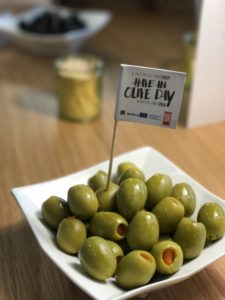
The Queen olive is like a green olive on steroids. It is big and beautiful. It is silky and soft. The body is almost meaty and it is also known as the “Beauty of Spain.”
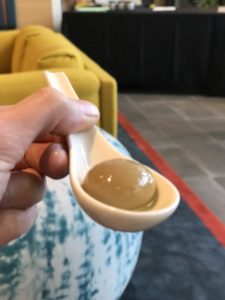
Another olive to look for is the Hojiblanca….a late season black olive. (If your Spanish 101 class is telling you that blanca means white…you are right because the name come from the color on the underside of the leaf) The firm Hojiblanca can be very sweet but are known for having a nutty aftertaste.
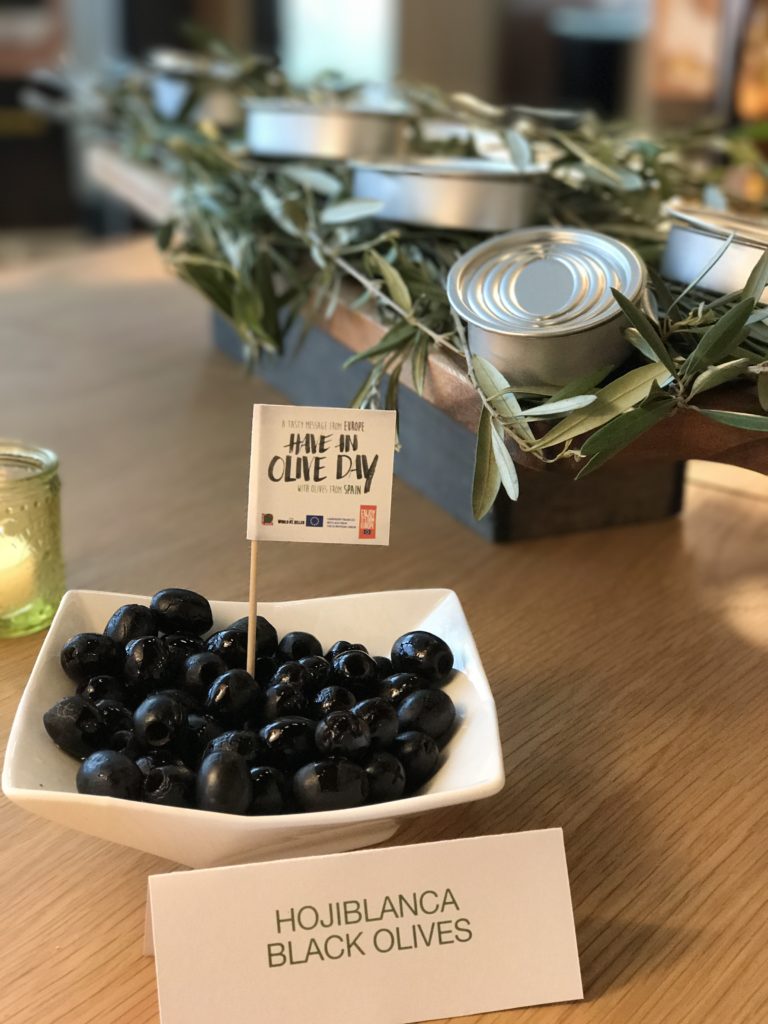
I also learned that olives have the unique ability to be salty, sweet, acidic and bitter all in one bite and engaging all of your tastebuds. This is why olives marry so well with a vast amount of foods.
Here is a picture of the menu of some fun dishes we were given to showcase the versatility of olives. (I didn’t get to taste all of them but I know the next time I make a paella, I am going to make sure I am using a REAL Spanish olive because it makes a difference in the flavor.)
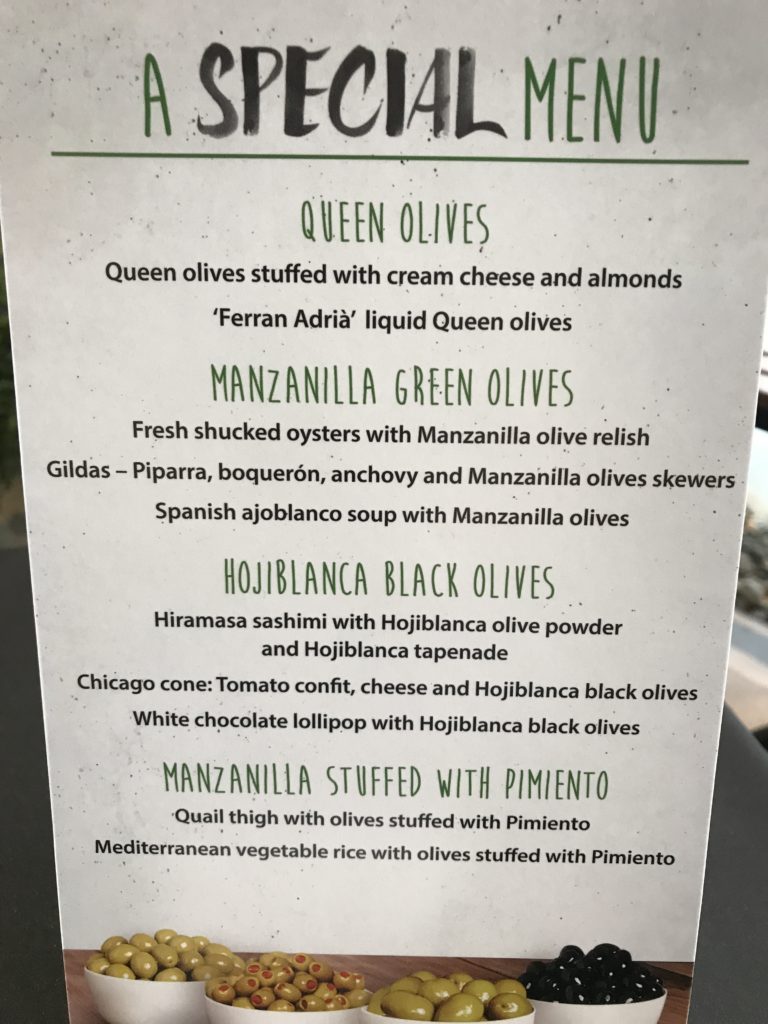
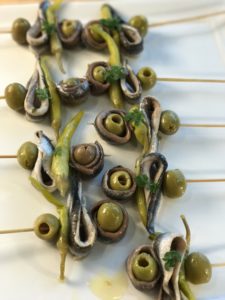
So next time you are perusing the olive aisle at the store….spend a little time looking at the labels and think of all the different ways you can enjoy the healthy benefits of the olive while experiencing all the amazing flavors, different varieties and discover something new.
“Taste, quality, tradition, respect…those are some of the reasons why most olives consumed in the U.S are Olives from Spain.”
Thank you, Chef José Andrés,for sharing your love of olives and for being an overall nice guy. I will think of you next time I share some olives and eat happy.
Have an Olive Day.

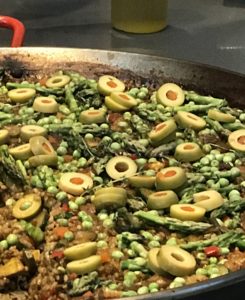 (
(